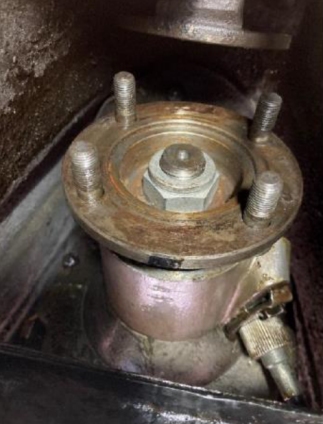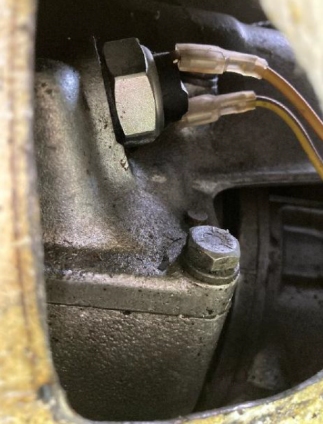Overdrive
cycling in and out issues
Jim Livingstone had some issues with the overdrive cycling in and
out of engagement and in May 2025 traced them to a low oil level in
the gearbox caused by a leakage. Subsequent testing on local roads
confirmed this which he described in a note released in May 2025.
However, the cycling returned on the first long run with extended
use of the overdrive. On revisiting the problem last month Jim discovered
that adjustment of the inhibitor switch has proved a more long lasting
solution. He has recorded the procedure he adopted in a further note.
Both of Jim's notes are released here.
How does a Laycock Type LH overdrive work?
The Laycock Type LH overdrive fitted between the gearbox and propeller
shaft is a self-contained gear unit which provides a higher overall
gear ratio than that with the final drive. The overdrive gears consist
of a central sun wheel and three planet gears which mesh with an internally
toothed annulus. Fitted inside the annulus is a uni-directional clutch.
A sliding clutch member is secured to the sun wheel and is free to
move forward and backward on the sun wheel splines. Attached to a
ball bearing, secured to the sliding clutch by a circlip, is a static
thrust ring. The thrust ring is actuated by two hydraulic pistons
and returned by primary and secondary return springs. An electronically
operated solenoid valve, mechanical pump, relief valve and low pressure
valve comprise the main components of the hydraulic system.
We have an article on how the overdrive works which looks at the overdrive
disengaged, so direct drive applies, and then with overdrive engaged
with the diagrams alongside. See pages 3 to 5 of V8NOTE457.
Link
Overdrive components diagram
Posted: 250715 |

Overdrive
output shaft
MGBGTV8
- renewing the oil seal in the overdrive output shaft
Jim Livingstone had some overdrive issues with the overdrive
cycling in and out of engagement and in May 2025 and traced
them to a low oil level in the gearbox caused by a leakage.
A visual inspection of the transmission unit revealed oil leaks
were particularly evident around the output shaft and
the sump cover. His plan, therefore, was to replace the oil
seal on the output shaft and the gaskets in the sump and solenoid
together with any O rings and hardware.
The procedure to change the various seals is relatively straightforward
but he found the information available in the official Manuals
is sparse to nonexistent. He thought fellow V8 owners might
appreciate the information he gathered from his research into
the subject and provided a useful illustrated article as V8NOTE681.
See the note. Link
|

Inhibitor
switch
MGBGTV8
– readjusting the overdrive
inhibitor switch (and a surprising discovery)
In his previous note Jim Livingstone suggested
that the cause of his V8’s overdrive cycling in and out
of engagement was low oil level in the gearbox caused by a leaking
output shaft seal. This conclusion appeared to be confirmed
by subsequent testing on local roads. However, the cycling returned
on the first long run with extended use of the overdrive. On
revisiting the problem last month he discovered that the adjustment
of the inhibitor switch has proved a more long lasting solution.
He has recorded the procedure he adopted in this note.
A surprising discovery was finding a rubber plug adjacent to
the inhibitor switch when Jim was under the car. There was no
reference to this in the workshop manual or parts catalogue
so he assumed this was not an original part of the car.
He decided to investigate if this tunnel aperture would be an
easier route for the wiring or maybe even facilitate replacement
of the switch should it prove faulty. He was able to check and
readjust the overdrive inhibitor switch more easily. In his
note Jim sets out the procedure he followed to check and readjust
the overdrive inhibitor switch. From longer road testing that
adjustment of the inhibitor switch has proved a more effective
solution to the overdrive cycling in and out.
See the note. Link |
| See
links to other articles on the Laycock overdrive. Information
Gateway |
|




